| 28
October 2001:
I constructed the rear outer
panel by a straight styrene sheet at the center and filled the corners
with polyester putty. The pic shows the cab before the putty
application.
|
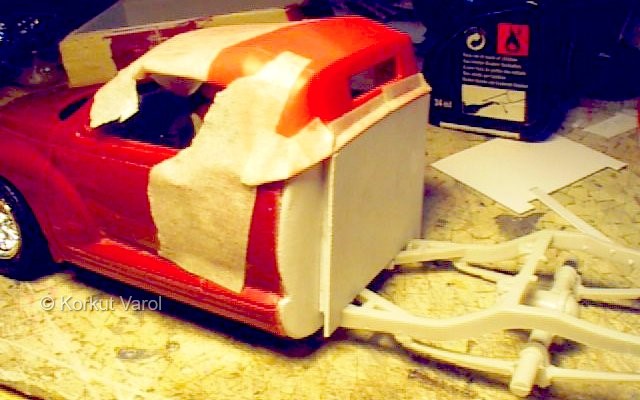
|
| Putty mess
after the application. |
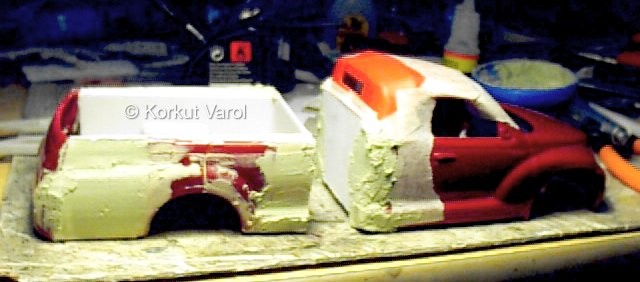
|
| View after
the first sanding. The rear overhang seemed too bulky and reduced the
ramp
angle, so I marked a cut-off line. |
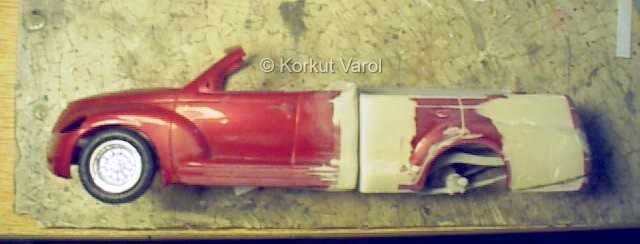
|
| 21
November 2001:
For the rear lamps, the
housings had to be carved in the plastic. I did the job with Dremel,
and
applied polyester putty around the lens to take the exact contours. To
prevent the putty from sticking to the lens, I applied Humbrol's Maskol
on the lens prior to putty application.
|
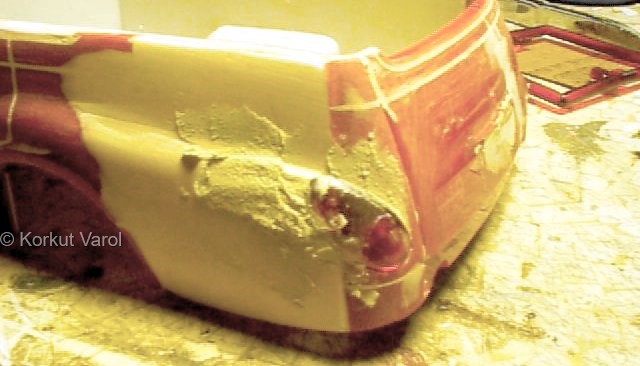
|
| Here, you see
the putty with the lens taken out and sanded. The fender bulge upper
contour
had a wobbly profile, and it would be corrected as shown next. |
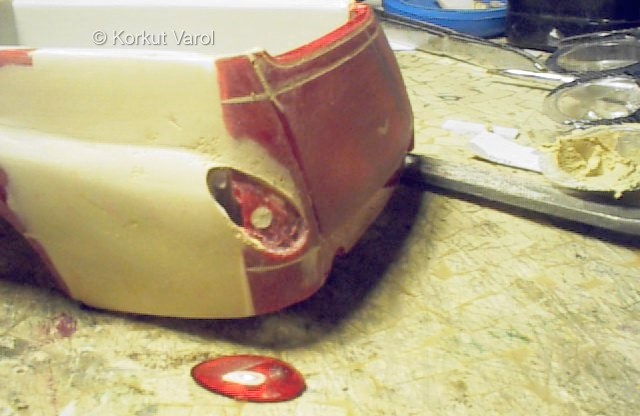
|
| This is the
restoring putty application for the fender bulge. Also, note the
filling
styrene pieces at the remaining gap from the rear window and the rear
bumper
panel. |

|
| Now the floor
panel. Since the chassis members were protruding in the cabin, a
beveled
panel was tailored on the floor. Also, a recess in the firewall was
made
to make room for the rear part of the engine. |
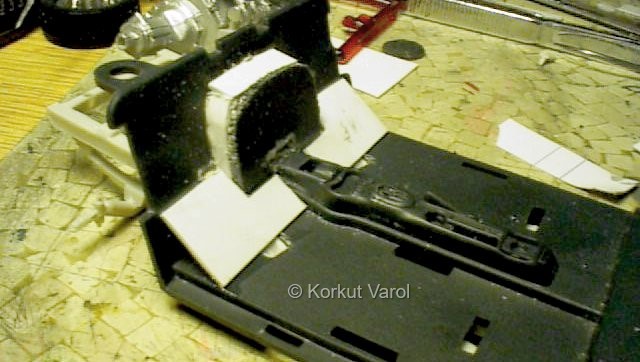
|
| I tailor-cut
the side panels, and filled the rear parts with putty after shaving the
armrests and rear door pockets. |
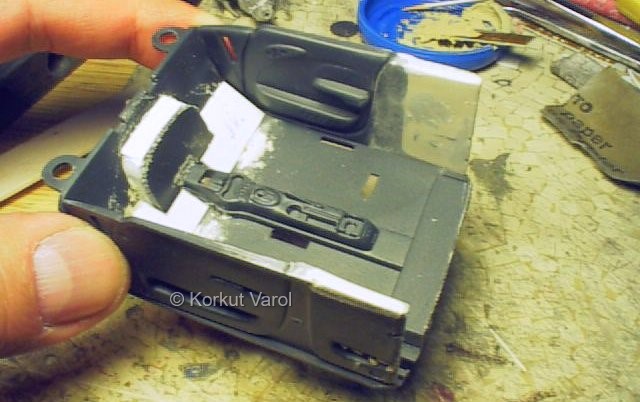
|
| As for the
rear bumper, I found a chromed part from my parts box and gave the same
curvature with the body. I drilled two holes to house the bumper
supports. |
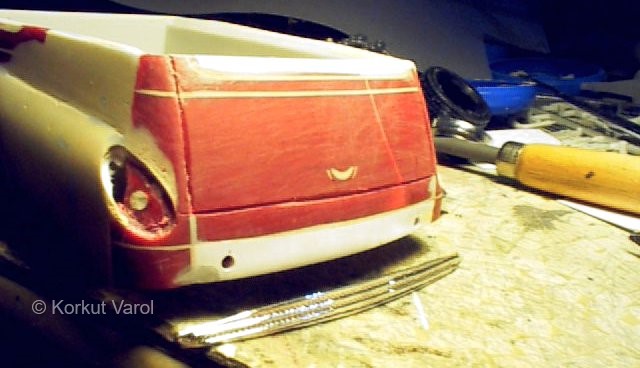
|
| The first primer
coat. I had to apply putty and sanding to the bed to get a smooth
finish. |
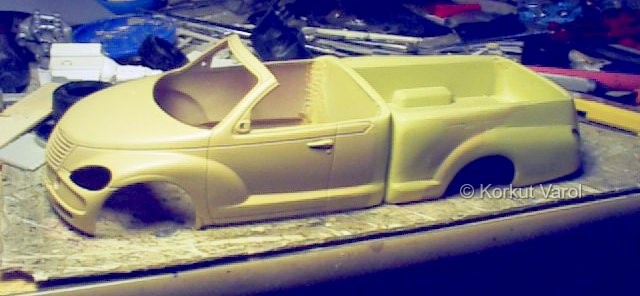
|
| For locating
the tent, I buried two pins into the plastic with heating by solder
gun.
I then applied super glue over them to finalize the fixing. The small
pin
you see at the very right is a broken one, with the embedded part being
impossible to remove. |
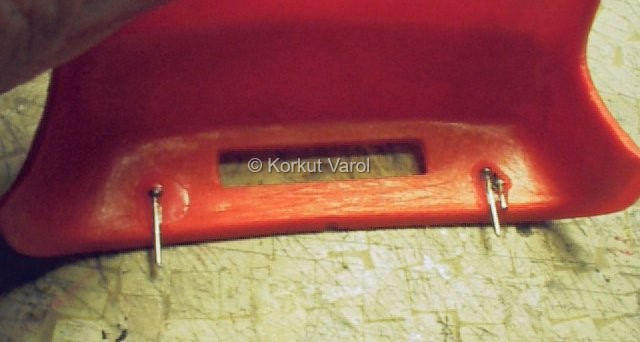
|
| On the mating
part of the cab, I drilled two holes to house the locating pins. |
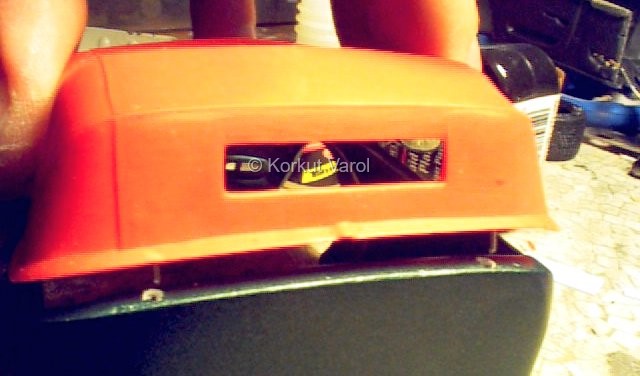
|
| For the bed
floor, real wood was used. I applied a coloring protective to the wood
to give it a proper color. |
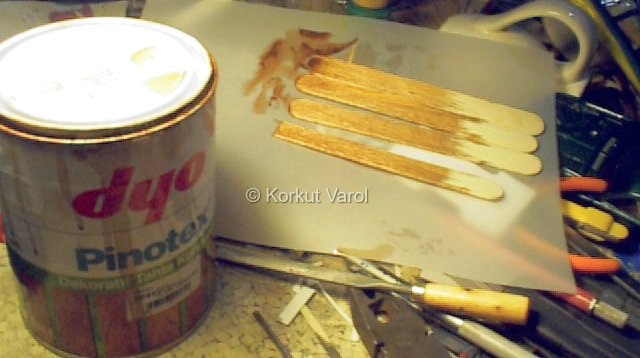
|
| Meanwhile,
I painted the car with metallic dark green. I fabricated the peripheral
bars from brass rod and applied bare metal on it for chromed look. I
also
applied bare metal to the lens housings for a brighter lens finish. I
was
too fast even for myself, I forgot to take pics during these steps! |
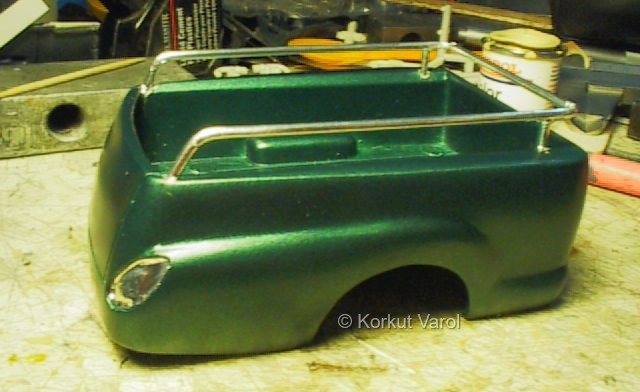
|
| Returning to
the wooden bed floor again; I cut strips from the painted and now dry
wood.
As in the following pics, I first laid them on a sticky paper, and
glued
the bed profile from a card on its back. (Old business cards are good
for
such jobs). Then I cut the whole thing out, accordingly. To make the
wood
grain stand out more in contrast, I sanded a little from the surface,
so
that the parts that absorbed paint seemed darker. Then I applied
another
coat, that resulted in lighter and darker shades of the same grain in
more
contrast. |
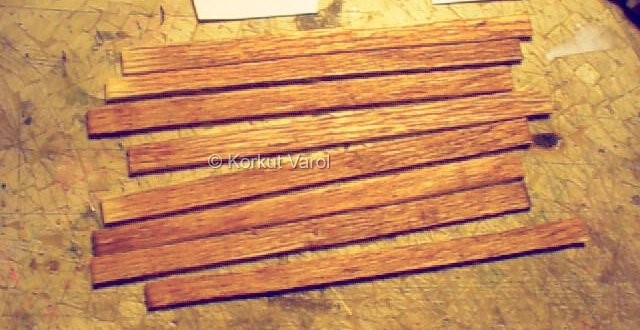
|
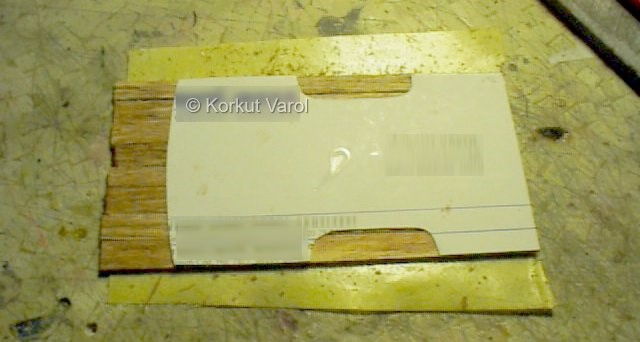
|
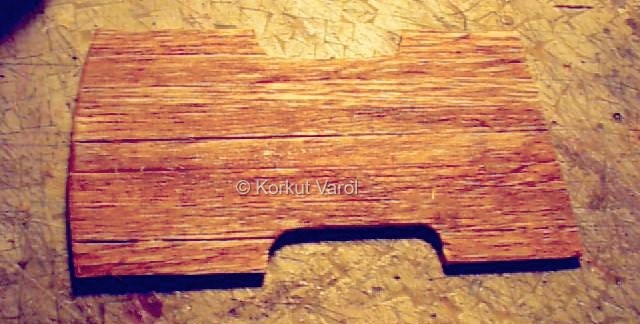
|
| I painted the
dashboard and side panels, and the seats. I applied carpeting on the
floor
with cutting from self-sticking black velvet. |
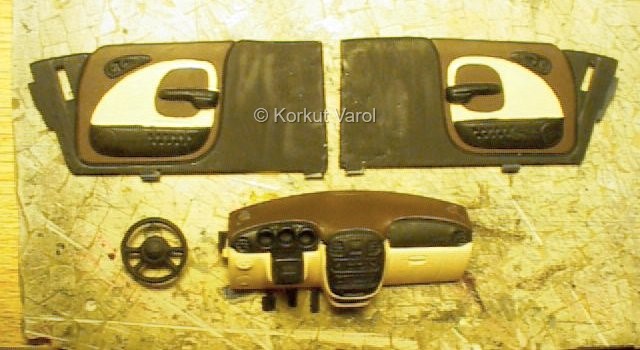
|
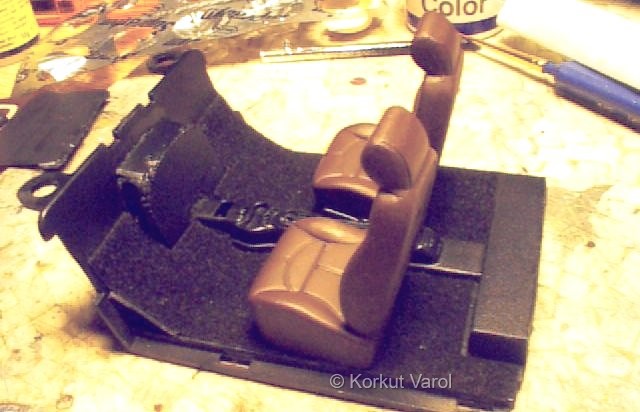
|
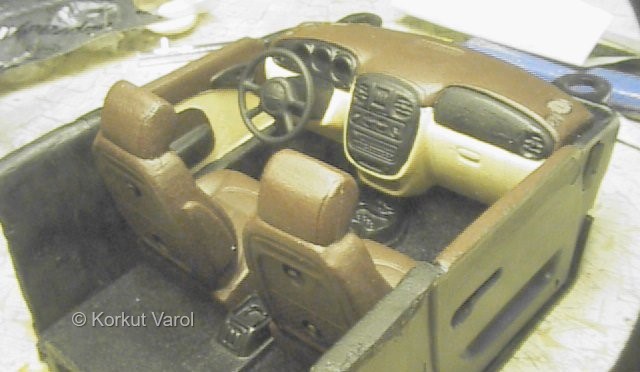
|
| Since the chassis
was interfering with the snap-tite kit's lens and reflector parts, I
cut
them all into individual parts. |
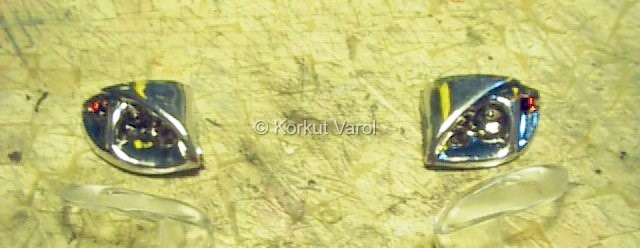
|
| I assembled
the lenses with Testors Clear Parts Cement as shown, and also the
reflectors
the same way. |
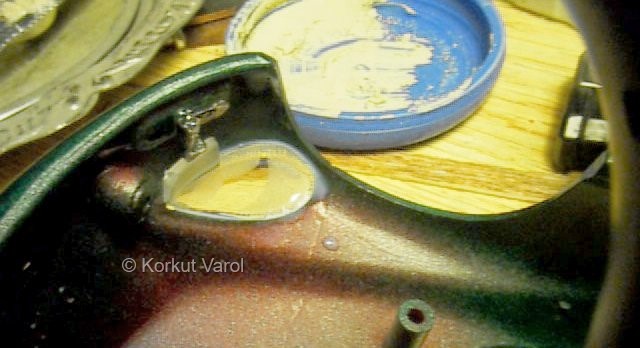
|
| Then I located
the engine in accordance with the internal tub, and glued it in place. |
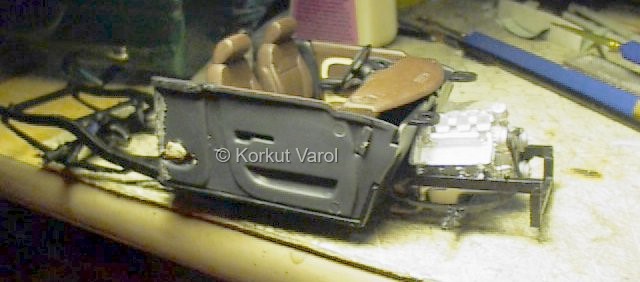
|

|

|
|

|
| |
|
| |
|



